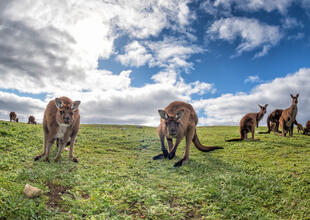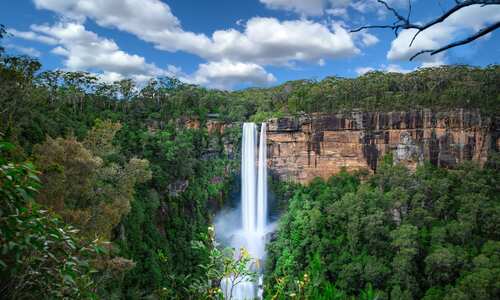Australasia and Pacific holidays
Overview
Australasia and the South Pacific offer travellers a wide range of holiday options and experiences for those looking for an Australia holiday, New Zealand holiday or chance to explore the picture-postcard islands close by.
People drawn to Australia and New Zealand by the wonderful combination of sights, wildlife and hospitable people will discover vast open spaces and vibrant cities, stunning panoramas and unspoilt beaches. And if food and drink are close to your heart, Pacific-rim cuisine has a well-deserved reputation, especially for seafood and world-class wine.
Popular countries in Australasia and Pacific
Essential experiences in Australasia and Pacific

Australasia and the Pacific boasts a wide range of natural wonders, with remarkable sights throughout Australia and New Zealand just waiting to be discovered.

Whether you want to see kangaroos, koalas or kiwis, Australasia and the Pacific has a wealth of endemic wildlife just waiting to be discovered in both Australia and New Zealand.

Australasia and the Pacific offer a wealth of honeymoon options for people looking to enjoy the trip of a lifetime in Australia, New Zealand or islands such as Fiji and Samoa.

Australasia and the Pacific is perfect for discovering the history and culture of the indigenous groups that live here. Discover the Aborigines, Maori and minority tribes of Papua New Guinea to get a feel for traditional Australasia.

Relax and recharge amidst Australasia and the Pacific's outstanding scenery on a spa break in Australia or New Zealand and come away refreshed and revitalised.

There are countless great beaches in Australasia and the Pacific, with superb sections of coastline in Australia, New Zealand and throughout the Pacific Islands, with the Cook Islands, French Polynesia and Fiji starring.

Australasia is awash with opportunities for activity and adventure holidays; Australia and New Zealand are in fact synonymous with adventure whilst the Pacific Islands boast brilliant diving and water sports.
Top itineraries in Australasia and Pacific

Discover dramatic ocean vistas, charming seaside towns and native wildlife on this road trip through Victoria and South Australia. Wrap things up amid the world-class wineries of Barossa Valley.

Discover Australia’s stunning landscapes, vibrant cities and unique wildlife, from Sydney’s harbours to Tasmania’s alpine wilderness and pristine beaches.
Top offers in Australasia and Pacific

cruise offer
Save up to 30% on selected departures
Book by: 09 January 2026
Taking in the island paradises of French Polynesia, this all-inclusive cruise aboard Le Paul Gauguin will see you travel in sheer luxury, enjoying open bars, gourmet dining and complimentary water sports in between beach relaxation and jungle treks to hidden temples.
Alternatively, call one of our experts on 020 7590 0614. We are open tomorrow from 8:30 am.
Meet our experts
Speak to a tailor-made specialist on








